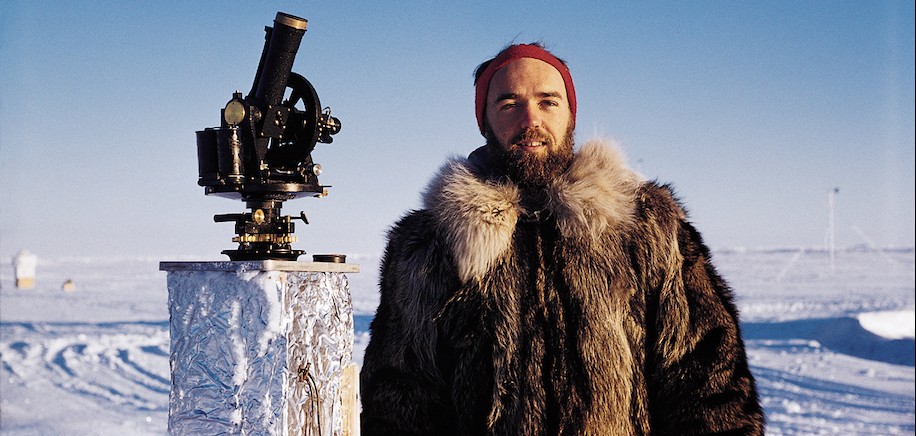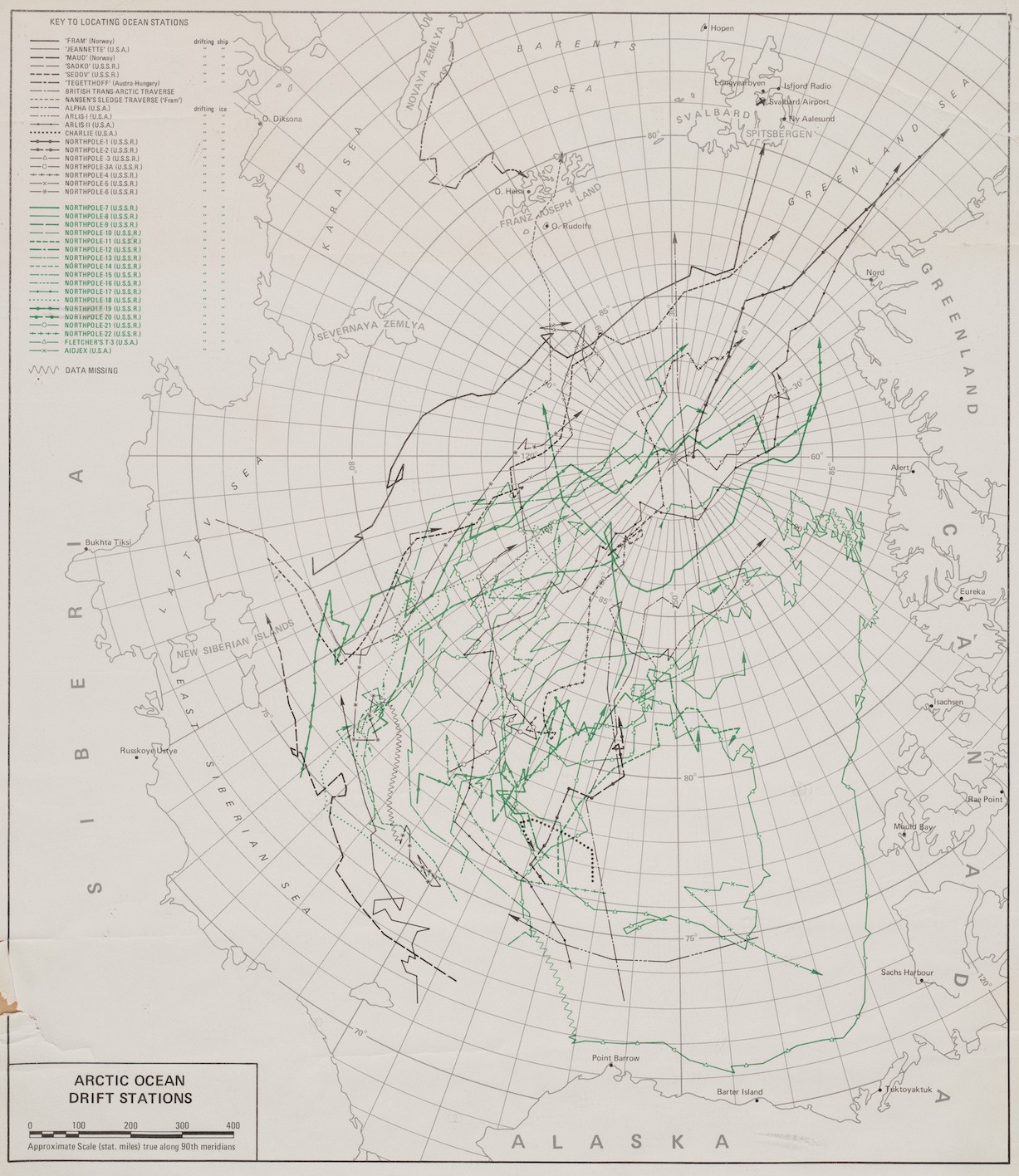The Map: The image above is a compliation of Arctic Drift Stations including ships and camps over a period of ~100 years of early Arctic Ocean exploration. These stations were designed to learn about the Arctic while traveling in the Arctic. During the International Geophysical Year (1957-1959) the U.S. established Alpha Station which was the home of a small group of scientists who lived on the ice. Some of their research included mapping the ocean depth by setting off dynomite explosions and timing the return of the sound, cutting holes in the ice or located open water leads to lower instruments to measure salinity and temperature, lowering cameras for pictures of the ocean bottom and tracking their travels using the stars to map Arctic curiculation patterns.
Click on the map for a larger version that shows their highlighted path during this period.
Life on Arctic Drift Stations: Alpha Drift Station was set up on an ice floe about 500 miles north of Alaska and left to drift for 18 months until the ice became too unstable to support the camp. To learn more about living and working on the Arctic Drift Stations you can read a short piece about Ken Hunkins and his time on Alpha Station. There is also an first hand look at the incredible establishment and operation of Alpha Camp archived in an ~30 minutes film (linked below). This was developed from imagery collected during their 18 months of drifting in the Arctic Ocean (April 1957-Nov 1958) and covering over 3,000 kms. Living and working on an ice floe was both challenging and exciting. Food was dropped by helicopter when the weather allowed; polar bear were fended off with rifle shot; camp was relocated when giant cracks formed in the ice; and the weather was unpredictable but bitter cold. Ken was very used to the cold growing up in New York State’s Adirondacks, but he told of how the clothing they were sent north with was so insufficient that he purchased a coat of fur pelts when in Alaska so he could stay warm.
Many new understandings emerged from Hunkin’s time on Alpha Station including the first images of the seafloor of the Arctic Ocean, verification of a spiraling current called the Ekman spiral, the identification of a new undersea mountain range that divides the Arctic, an undersea mountain located about half way between Alaksa and the North Pole now named Hunkins Seamount, and the collection of a small conch shaped mollusk fossil now known as Colus hunkinsi.
More Resources on Arctic Drift Stations & Ken Hunkins


